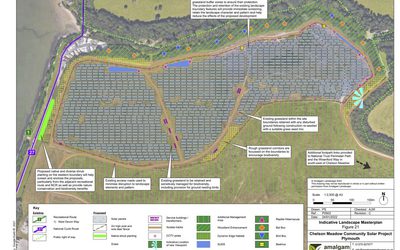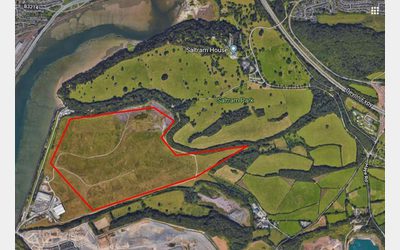- Pec In Action /
- Chelson Meadow Solar Farm
Chelson Meadow Solar Farm
We are working with Plymouth City Council to develop a community-owned solar farm on the old landfill site at Chelson Meadow. You can help us make this vision come true.

This project will bring part of the old landfill site at Chelson Meadow, into action as a major part of the City's response to the Climate Emergency. We were delighted that our planning application was approved on Thursday 23 June 2022.
The solar farm will:
- Make a substantial contribution to Plymouth's ambition to get to carbon neutral emissions.
- Put any surplus funds generated towards other local community projects that are responding to climate change and tackling fuel poverty.
- Provide a massive educational opportunity for visitors.
- Put local people in control over a key part of the City's transition to carbon neutral emissions.
Our feasibility studies show that this community solar farm could generate the following local benefits:
Where is Chelson Meadow?
Chelson Meadow is an old landfill site located to the east of Plymouth, on land adjacent to the River Plym. The map below shows the exact location.

How big is the solar farm going to be?
The proposal is for an approximately 13 megawatt solar farm (33,000 panels) covering approximately 17.8 hectares. This will produce 14,284 MWh of renewable energy each year, which would power around 3,800 homes.
Where will it be visible from?
We have completed a Landscape and Visual Impact Assessment (submitted in planning application and available to view here). As the solar farm has been designed to only occupy the low lying northern sector of Chelson Meadow, it will only be visible from a few restricted locations. Planting vegetation in the area will also help to screen it.
For these viewpoints, photomontages have been created, with the proposed development superimposed onto the existing photographic view. The interactive map below shows these. Click on the camera icon to view the photographs and then click on the image to enlarge.
How will biodiversity be affected?
We have made a commitment to 26% biodiversity net gain, improving the existing habitats across an area in excess of 37 hectares, this includes a further 20 hectares beyond the footprint of the solar farm itself. Our commitment is explained in a 30-year Outline Biodiversity Management Plan. This includes long term management actions to improve the condition of the existing grassland, ‘open mosaic’ and woodland habitats across this site plus other improvements such as bird and bat boxes, homes for reptiles (reptile Hibernacula) and the introduction of beehives.